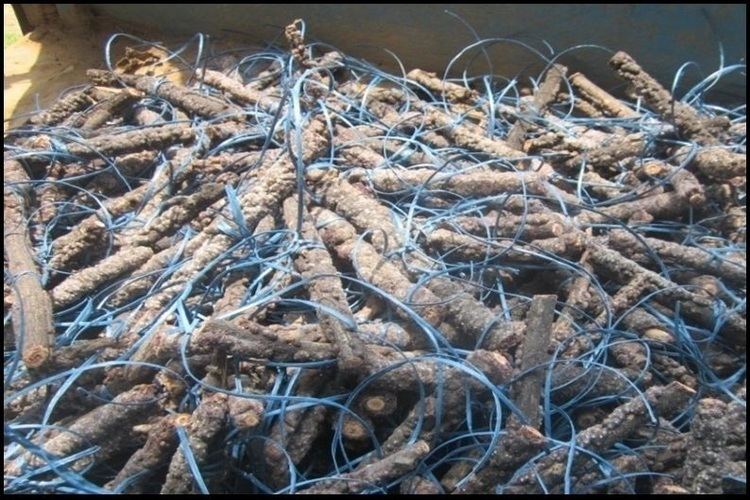 | ||
Lac is the scarlet resinous secretion of a number of species of lac insects, of which the most commonly cultivated species is Kerria lacca.
Contents
- Chinese pla soldiers misbehave with indian jawans at lac
- Etymology
- Host trees
- Harvesting
- Uses
- Production levels
- Species
- References
Cultivation begins when a farmer gets a stick (broodlac) that contains eggs ready to hatch and ties it to the tree to be infested. Thousands of lac insects colonize the branches of the host trees and secrete the resinous pigment. The coated branches of the host trees are cut and harvested as sticklac.
The harvested sticklac is crushed and sieved to remove impurities. The sieved material is then repeatedly washed to remove insect parts and other soluble material. The resulting product is known as seedlac. The prefix seed refers to its pellet shape. Seedlac which still contains 3–5% impurities is processed into shellac by heat treatment or solvent extraction.
The leading producer of lac is Jharkhand, followed by the Chhattisgarh, West Bengal, and Maharashtra states of India. Lac production is also found in Bangladesh, Myanmar, Thailand, Laos, Vietnam, parts of China, and Mexico.
Chinese pla soldiers misbehave with indian jawans at lac
Etymology
The word lac is derived from the Sanskrit word lākshā' (लाक्षा), which represents the number 100,000. It was used for both the lac insect (because of their enormous number) and the scarlet resinous secretion it produces. This resin has been used as wood finish, skin cosmetic and dye for wool and silk in ancient India and neighbouring areas. Lac resin was once imported in sizeable quantity into Europe from India along with Eastern woods.
Host trees
Kerria lacca can be cultivated on either cultivated or wild host trees.
Estimated yields per tree in India are 6–10 kg for kusum, 1.5–6 kg for ber, and 1–4 kg for dhak. The bugs' life cycles can produce two sticklac yields per year, though it may be better to rest for six months to let the host tree recover.
Harvesting
Lac is harvested by cutting the tree branches that hold sticklac. If dye is being produced, the insects are kept in the sticklac because the dye colour comes from the insects rather than their resin. They may be killed by exposure to the sun.
On the other hand, if seedlac or shellac is being produced, most insects can escape because less coloured pale lac is generally more desired.
Uses
The use of lac dye goes back to ancient times. It was used in ancient India and neighbouring areas as wood finish, skin cosmetic and dye for wool and silk. In China it is a traditional dye for leather goods. Lac for dye has been somewhat replaced by the emergence of synthetic dyes, though it remains in use, and some juices, carbonated drinks, wine, jam, sauce, and candy are coloured using it.
Lac is used in folk medicine as a hepatoprotective and anti-obesity drug. It is used in violin and other varnish and is soluble in alcohol. This type of lac was used in the finishing of 18th-century fowling guns in the United States.
Production levels
India exported significant amounts of sticklac derivatives, especially lac dye, from the 1700s to the late 1800s. Production declined as synthetic dyes emerged, and after the late 1940s, production of seedlac and shellac also declined due to replacement.
In the mid-1950s, India annually produced about 50,000 tons of sticklac and exported about 29,000 tons of lac; by the late 1980s the figures were about 12,000 tons and 7,000 tons, respectively. By 1992-93, India's lac exports fell further to 4,500 tons. In the same period, Thailand's production increased somewhat, with annual lac exports of around 7,000 tons in the 1990s, mainly of seedlac. China exported only about 500 tons of shellac per year in the 1990s but produced more lac internally: 4,000-5,000 tons of sticklac and 2,000-3,000 tons of shellac in Yunnan province, with additional, smaller production in Fujian province. While India, Thailand, and China are the major lac producers, Bangladesh, Myanmar, Vietnam, and Sri Lanka also play small roles.
